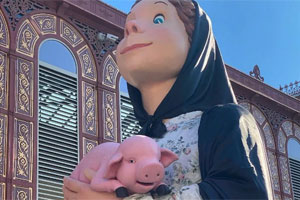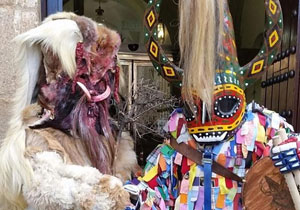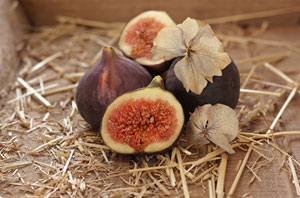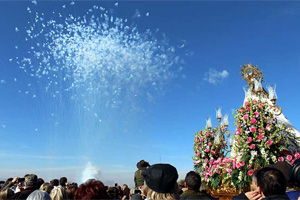San Sebastian Tamborrada
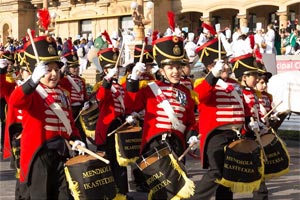
What does the Tamborrada consist of
From midnight on the 19th of January until midnight on the 20th, the tamborradas go through the streets of San Sebastian playing the marches of the maestro Raimundo Sarriegi.
In each comparsa there are between 20 and 50 drums and between 50 and 100 barrels (replicantes), accompanied by a brass band, a spectacle of colour and sound!
The first event is the flag-raising in the Plaza de la Constitución, where the authorities take part and it is broadcast on television. The neighbourhoods organise their own, more individual flag-raising ceremonies. This event marks the beginning of the festivities in honour of the patron saint, San Sebastián.
The following morning, the Children's Tamborrada parades with the participation of the city's schools, followed by the adult tamborradas throughout the 24 hours of the festival.
On the 20th at 24:00 hours the Unión Artesana hoists the flag in the Plaza de la Constitución as the end of the festival.
What to see in San Sebastián
San Sebastián, also known as Donostia in Basque, is a charming city on the northern coast of Spain. It is famous for its beautiful bay, exceptional cuisine, and cultural atmosphere. Here are some recommendations on what to see and do in San Sebastián:
- Playa de la Concha: This iconic golden sand beach is one of the most famous in Europe. It's perfect for relaxing, sunbathing, and enjoying panoramic views of the city.
- Paseo Nuevo: A beautiful coastal promenade that takes you around Mount Urgull. From here, you'll have spectacular views of the bay and the city.
- Mount Urgull: It's a hill located in the heart of the city. At the top, you'll find a castle and a viewpoint that offers breathtaking views.
- Parte Vieja (Old Town): This is the historic center of San Sebastián and is full of charm. Here you'll find narrow streets, picturesque squares, and plenty of traditional bars and restaurants.
- Cathedral of the Good Shepherd: It's a beautiful cathedral built in neo-Gothic style that is worth a visit.
- Miramar Palace: This English-style palace was built as a summer residence for Queen María Cristina. It is located in a privileged setting by the sea.
- Kursaal: This cultural and convention center is an impressive modern building designed by Rafael Moneo. It includes a concert hall and an auditorium.
- San Telmo Museum: This museum is located in a former convent and features a rich collection covering Basque history and culture.
- Chillida Leku Museum: Dedicated to the famous Basque sculptor Eduardo Chillida, this outdoor museum exhibits an impressive collection of his works in a natural setting.
- The Wind Comb (Peine del Viento): Also known as "Peine del Viento" or "Peine de los Vientos", it is an impressive sculpture and set of works by Chillida located on the coast.
- Gastronomy: You can't miss out on trying the famous Basque cuisine. You can enjoy pintxos (tapas) in local bars and taste dishes like bacalao a la vizcaína, txuleta (beef chop), and cheesecake.
- San Sebastián International Film Festival: If you visit in September, this is one of the most important film festivals in the world and attracts many celebrities and film enthusiasts.
San Sebastián is a city best enjoyed by strolling, so don't hesitate to get lost in its streets and discover its charms.
What to eat in San Sebastián
San Sebastián is known for its exceptional Basque cuisine, and it is famous for its pintxos, a variety of small dishes and tapas. Here are some delicious culinary options you shouldn't miss during your visit to this city:
- Pintxos: Pintxos are a fundamental part of San Sebastián's gastronomy. You can find a wide variety of options, from simple ones like Iberian ham with bread and tomato, to more elaborate creations with fresh local ingredients. Some popular places to enjoy pintxos include the Old Town and bars in the city center.
- Bacalao a la Vizcaína: This is a classic Basque dish consisting of cod cooked with a sauce made of tomato, red peppers, onion, and garlic. It's flavorful and comforting.
- Marmitako: Marmitako is a traditional dish from Basque cuisine, originating in Spain. It is a dish with a rustic and comforting flavor, inspired by seafaring life. Its main ingredients are northern bonito (white tuna), potatoes, peppers, onions, tomatoes, garlic, and olive oil. The bonito is cut into chunks and cooked with the vegetables in a fish broth, which naturally thickens with the starch from the potatoes. It is seasoned with salt, pepper, paprika, and bay leaf, giving it its characteristic balanced and mild flavor. Marmitako is a dish appreciated for its simplicity and the quality of the fresh ingredients that compose it.
- Txuleta: This is a beef chop, typically from the Basque breed Rubia Gallega or similar, grilled to perfection and served juicy and tender. It's a must-try for meat lovers.
- Pimientos de Padrón: These are small, mild green peppers that are fried in olive oil and served with salt. While most are mild, occasionally you'll find a spicy one, adding a touch of excitement.
- Gilda: A classic pintxo composed of green olives, anchovies, and guindilla peppers on a toothpick. It's a delicious and balanced bite.
- Cheesecake: Basque cheesecake is famous for its creamy texture and delicate flavor. It's a dessert you can't miss.
- Idiazabal: This is a smoked Basque cheese made from sheep's milk. It's delicious and can be enjoyed as an appetizer or with a good glass of wine.
- Bacalao al Pil Pil: This is another classic cod preparation, where the fish is cooked with olive oil, garlic, and guindilla pepper, creating a rich and flavorful emulsified sauce.
Don't forget to pair your meals with a good local wine or cider for a complete culinary experience.

